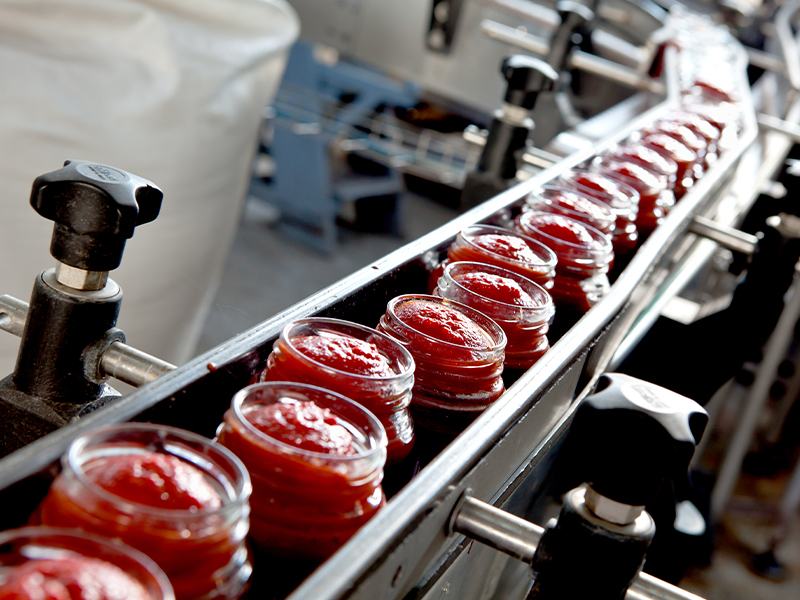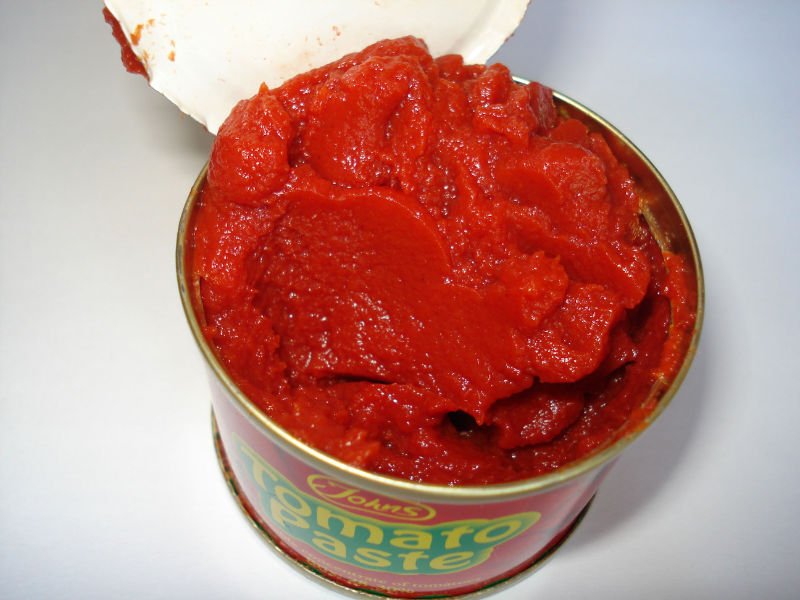A Versatile and Convenient Food Storage Solution
Introduction:
Tomato paste is a popular ingredient used in various cuisines around the world. It is obtained by cooking tomatoes for a prolonged period and then straining them. Tomato paste has a rich flavor and is highly concentrated, making it an essential pantry staple for both home cooks and professional chefs. In order to ensure its preservation and easy storage, tomato paste is commonly packaged in cans. This article aims to delve into the key aspects of tomato paste cans, including their design, benefits, environmental impact, and best practices for using and storing tomato paste cans.
Design and Features:
Tomato paste cans are typically made from tin or steel, with a protective coating on the inside to prevent the acid from the tomatoes from reacting with the metal. The cans are designed to be airtight and durable, ensuring the preservation of the tomato paste for an extended period. They usually come in various sizes, ranging from small individual serving sizes to larger family-sized cans.
Benefits of Tomato Paste Cans:
1. Long Shelf Life: One of the key advantages of tomato paste cans is their ability to extend the shelf life of tomato paste. The airtight seal of the can prevents air from entering and causing spoilage, allowing the paste to remain fresh for a longer period.
2. Convenience: Tomato paste cans are convenient to use, as they are pre-packaged in measured quantities. This eliminates the need to measure and portion the paste, saving both time and effort in the kitchen.
3. Versatility: The use of tomato paste cans allows for easy incorporation of the ingredient into various recipes. The concentrated nature of the paste enhances the flavor and color of dishes, making it an indispensable element in cooking.
4. Portability: Tomato paste cans are lightweight and easily transportable. This makes them suitable for campers, outdoor enthusiasts, and individuals who enjoy cooking while on the go.
Environmental Impact:
While tomato paste cans offer convenience and practicality, it is important to acknowledge their environmental impact. Cans, especially those made from tin or steel, are largely recyclable. Recycling helps reduce energy consumption and greenhouse gas emissions associated with the production of new cans. It is crucial for consumers to dispose of tomato paste cans responsibly and support recycling initiatives.
Usage and Storage Best Practices:

1. Proper Opening: To open a tomato paste can, a can opener is required. Ensure that the can opener is clean and in good condition before use. Open the can with caution, as the edges may be sharp. Use the lid to prevent spillage and maintain the airtight seal when storing any unused portion.
2. Storage Temperature: Tomato paste cans should be stored in a cool, dry place away from direct sunlight. Exposure to heat and light can cause the quality of the paste to deteriorate. Once opened, leftover paste should be transferred to a separate airtight container and refrigerated to prolong its shelf life.
3. Usage Quantity: When cooking with tomato paste, it is often required in small quantities. To avoid waste, transfer any excess paste from the can into an ice cube tray and freeze for future use. Once frozen, the tomato paste cubes can be stored in a freezer bag for convenient portioning in recipes.
4. Checking for Spoilage: Before using tomato paste from a can, it is essential to check for signs of spoilage. If the paste appears moldy, has an off smell, or shows signs of discoloration, it is recommended to discard it immediately.
Conclusion:
Tomato paste cans are a practical and efficient solution for storing this versatile ingredient. With their long shelf life, convenience, and recyclable nature, they provide a convenient way to incorporate tomato paste into various culinary endeavors. By following proper usage and storage guidelines, individuals can make the most of tomato paste cans and ensure the quality and flavor of their dishes remain exceptional.Tomato Paste Can: A Versatile and Convenient Food Storage Solution
Introduction:
Tomato paste is a popular ingredient used in various cuisines around the world. It is obtained by cooking tomatoes for a prolonged period and then straining them. Tomato paste has a rich flavor and is highly concentrated, making it an essential pantry staple for both home cooks and professional chefs. In order to ensure its preservation and easy storage, tomato paste is commonly packaged in cans. This article aims to delve into the key aspects of tomato paste cans, including their design, benefits, environmental impact, and best practices for using and storing tomato paste cans.
Design and Features:
Tomato paste cans are typically made from tin or steel, with a protective coating on the inside to prevent the acid from the tomatoes from reacting with the metal. The cans are designed to be airtight and durable, ensuring the preservation of the tomato paste for an extended period. They usually come in various sizes, ranging from small individual serving sizes to larger family-sized cans.
Benefits of Tomato Paste Cans:
1. Long Shelf Life:
One of the key advantages of tomato paste cans is their ability to extend the shelf life of tomato paste. The airtight seal of the can prevents air from entering and causing spoilage, allowing the paste to remain fresh for a longer period. This is particularly beneficial for homeowners and food businesses alike as it reduces wastage and the need for frequent restocking.
2. Convenience:

Tomato paste cans are convenient to use, as they are pre-packaged in measured quantities. This eliminates the need to measure and portion the paste, saving both time and effort in the kitchen. The convenience factor is especially valuable for individuals who enjoy cooking and for chefs in professional kitchens who need to work efficiently to meet customer demands.
3. Versatility:
The use of tomato paste cans allows for easy incorporation of the ingredient into various recipes. The concentrated nature of the paste enhances the flavor and color of dishes, making it an indispensable element in cooking. From pasta sauces to stews and soups, tomato paste can be used to add depth and richness to a wide range of culinary creations.
4. Portability:
Tomato paste cans are lightweight and easily transportable. This makes them suitable for campers, outdoor enthusiasts, and individuals who enjoy cooking while on the go. The convenience of being able to bring tomato paste along without the risk of spills or spoiling opens up possibilities for outdoor cooking adventures or meals prepared away from home.
Environmental Impact:
While tomato paste cans offer convenience and practicality, it is important to acknowledge their environmental impact. Cans, especially those made from tin or steel, are largely recyclable. Recycling helps reduce energy consumption and greenhouse gas emissions associated with the production of new cans. When consumers actively participate in recycling programs and ensure that empty tomato paste cans are disposed of properly, they contribute to a more sustainable food packaging system.
Usage and Storage Best Practices:
1. Proper Opening:
To open a tomato paste can, a can opener is required. Ensure that the can opener is clean and in good condition before use. Open the can with caution, as the edges may be sharp. Use the lid to prevent spillage and maintain the airtight seal when storing any unused portion. By taking these precautions, you can avoid injuries and maintain the quality of the tomato paste.
2. Storage Temperature:
Tomato paste cans should be stored in a cool, dry place away from direct sunlight. Exposure to heat and light can cause the quality of the paste to deteriorate. Storing the cans in a pantry or cupboard that is not exposed to extreme temperatures ensures that the flavor and consistency of the tomato paste remain optimal.
3. Usage Quantity:
When cooking with tomato paste, it is often required in small quantities. To avoid waste, transfer any excess paste from the can into an ice cube tray and freeze for future use. Once frozen, the tomato paste cubes can be stored in a freezer bag for convenient portioning in recipes. This method allows for easy access to small amounts of tomato paste whenever needed, minimizing leftovers that may go to waste.

4. Checking for Spoilage:
Before using tomato paste from a can, it is essential to check for signs of spoilage. If the paste appears moldy, has an off smell, or shows signs of discoloration, it is recommended to discard it immediately. This ensures that the safety and quality of the dishes prepared will not be compromised.
5. Recipe Planning:
To maximize the usage of tomato paste and reduce the number of partially used cans in the pantry, plan recipes that call for tomato paste as a prominent ingredient. By doing so, you can ensure that the entire can is utilized in a single cooking session, minimizing wastage.
6. Bulk Buying and Storage:
For those who frequently use tomato paste in their cooking, consider buying tomato paste cans in bulk to save costs. However, be mindful of the storage conditions as a longer shelf life may be required. Ensure that the storage area is suitable for preserving the quality of the tomato paste and that it is rotated regularly to use the cans with the oldest expiration dates first.
7. Labeling:
To avoid confusion and prevent mix-ups, it is advisable to label the tomato paste cans with the purchase date using a permanent marker. This ensures that fresh tomato paste is used within a reasonable time frame and that older cans are not forgotten and left unused for an extended period.
8. Creative Repurposing:
Empty tomato paste cans can have numerous creative uses beyond their intended purpose. From storage containers for small kitchen items to DIY crafts and organization projects, repurposing tomato paste cans is a great way to reduce waste and embrace sustainability.
9. Donating Excess:
If you find yourself with excess tomato paste cans that you are unlikely to use before their expiration date, consider donating them to local food banks or charitable organizations. This can help reduce food waste while also supporting those in need.
Conclusion:
Tomato paste cans provide a versatile and convenient food storage solution for home cooks and food businesses. With their long shelf life, convenience in portioning, and ability to enhance the flavor of various dishes, tomato paste cans have become a staple in kitchens around the world. By following best practices for using and storing tomato paste cans, individuals can maximize the benefits while reducing waste and promoting sustainability. With proper care, tomato paste cans can be an essential tool in creating delicious meals and contributing to a more environmentally conscious approach to food storage.









